2024 Kawasaki Ninja ZX-6R Review
Bike review by Rennie Scaysbrook
What’s the best way to fool people about your age when the years creep up?
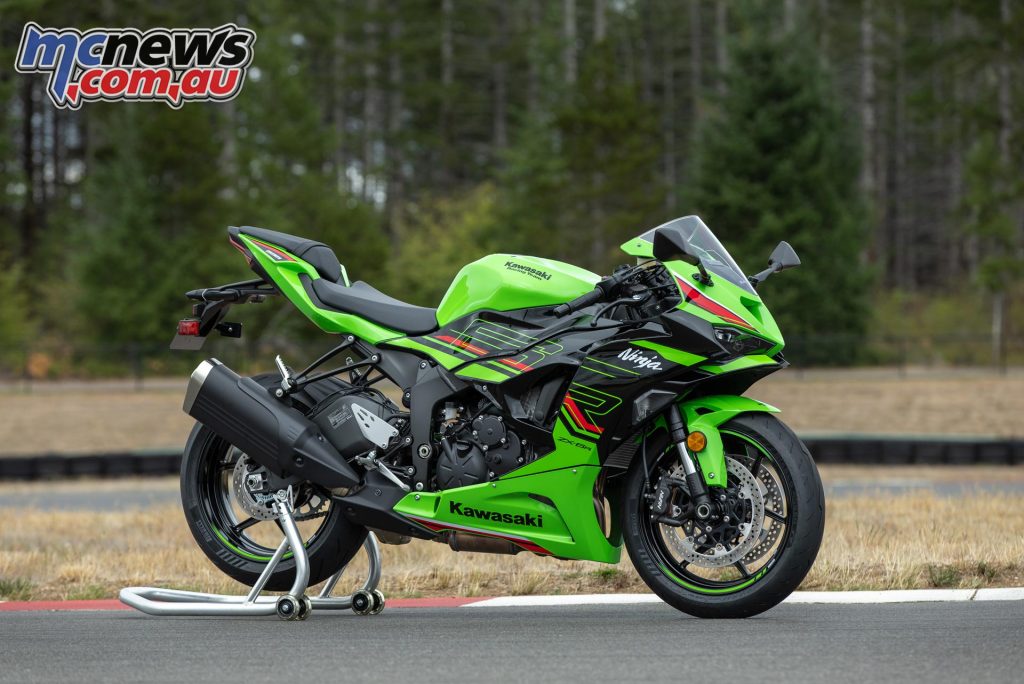
If you answered, “Get a facelift”, you’d be right.
A facelift, at least on human subjects, is a surgical procedure that involves the removal of excess facial fat, the tightening of facial muscles, and the trimming of facial skin to approximate a smoother, firmer facial appearance, according to John Hopkins Medicine.
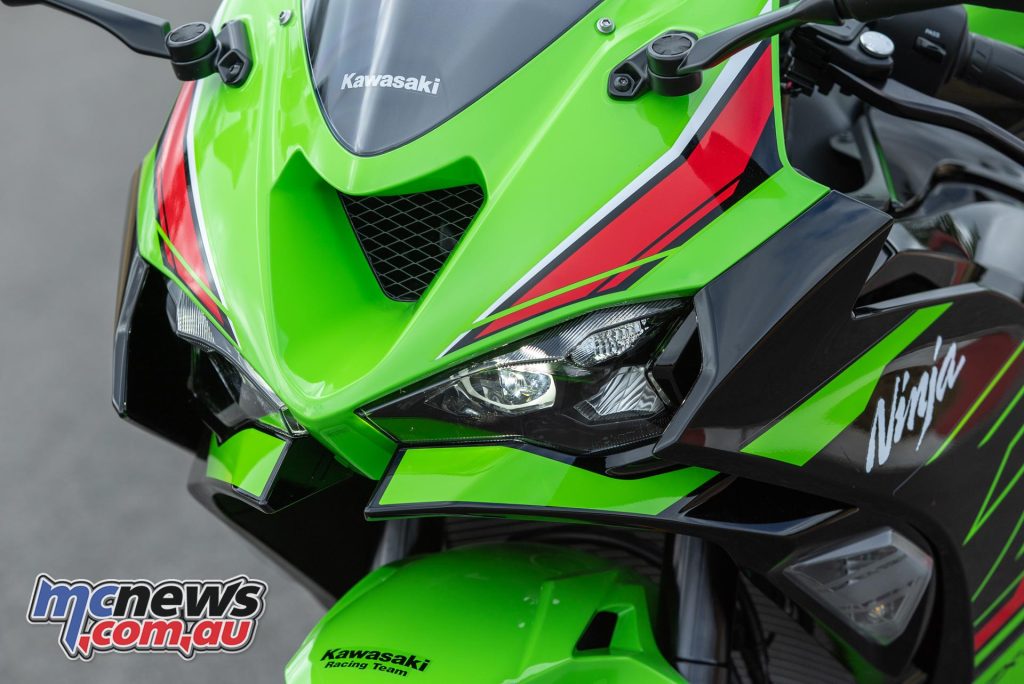
In motorcycle terms, a facelift generally means no more than “Bold New Graphics” or the more surgically intensive “Bold New Styling”, the latter of which Kawasaki has largely chosen for the new 2024 Ninja ZX-6R.
While the ’24 6R is very similar to what you could get last year, just saying “Bold New Styling” might be doing it a bit of a disservice. Yes, the styling is thankfully redone — I wasn’t a fan of the long-nose 2023 edition — and if you squint really hard, the new front-end almost looks like a modern interpretation of the very first 636 from 2003, the year Kawasaki told everyone else to go jump and built a 36 cc larger motorcycle than the rest of the class.
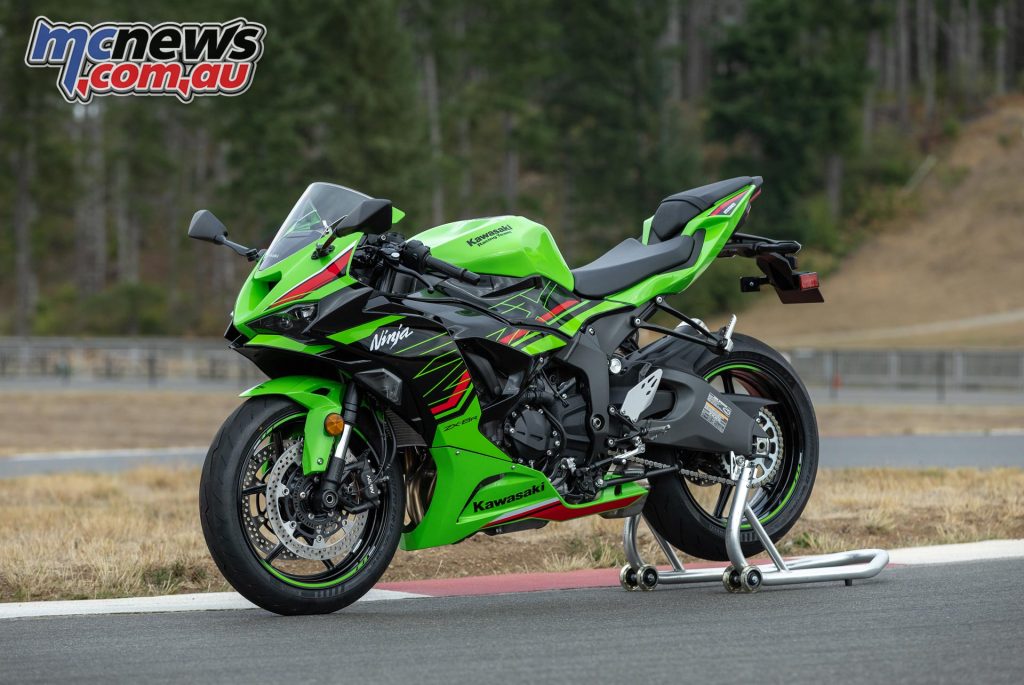
LED lights and indicators reside in the front of the ZX-6R, and you’ve been given the 4.3-inch TFT display more commonly found on the ZX-10R, Versys 1000, etc. That dash gives you access to the Kawasaki Rideology app, a piece I’m unsure how many riders actually use. It does allow you to log your ride, change your bike’s map, etc, so maybe I’m being a little pessimistic. Or just tech deaf.
As has been the case for many years, you’re only going to get your Kawasaki in 636 cc, the supersport race rule makers long ago letting Team Green off the hook for their contrary capacity. Hey, Ducati has been at this game for decades, and with the 636, the Japanese finally managed to get one of their own back.
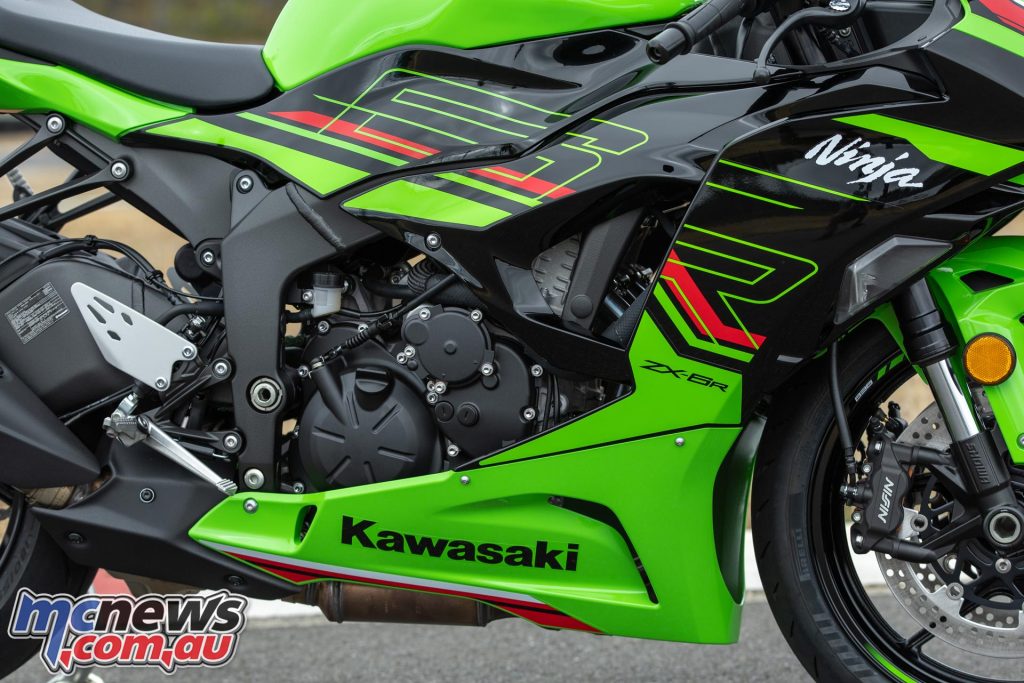
So the 6R has had a motorcycle facelift. So what? It’s still an exceptionally good motorcycle, even in the onslaught of next-generation supersport rides like the Ducati Panigale V2, Triumph Street Triple 765 RS and the MV Agusta F3 800. One could argue Kawasaki had these new supersport rules figured out 20 years ago, saying the larger capacity makes for a better road bike. On that point, it’s hard to argue with them.
The 636 has been a a rock in the supersport class and, even though I’d held out hope for a capacity hike and a glorious return to the ZX-7R nomenclature, Kawasaki feels the 636 name is worthy of keeping.
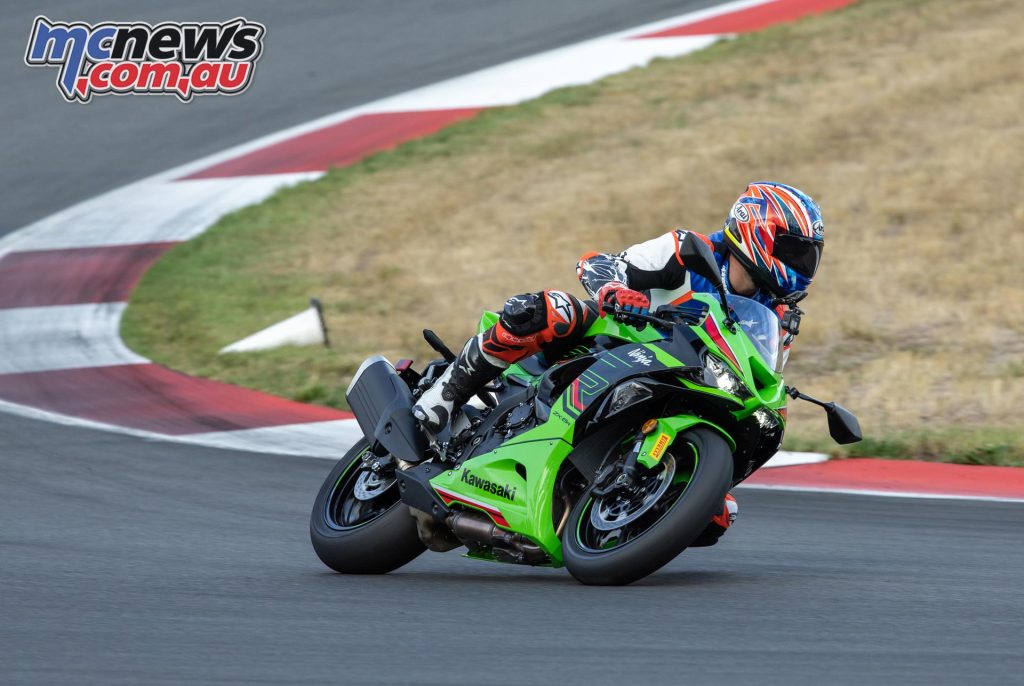
Australia is yet to fully embrace the next-gen supersport rules for racing, lagging behind WorldSSP, BSB, and MotoAmerica in implementing them, but even with those race series allowing higher capacity machines in the class, the 636 has remained competitive.
Does that mean you’re getting more performance in your 2024 ZX-6R? Not exactly.
Kawasaki has highlighted new, high-lift cam profiles for the ’24 6R with a different intake and exhaust aimed at boosting low rpm performance for street use and to help the motor get through the ever-tightening noose of European emissions.
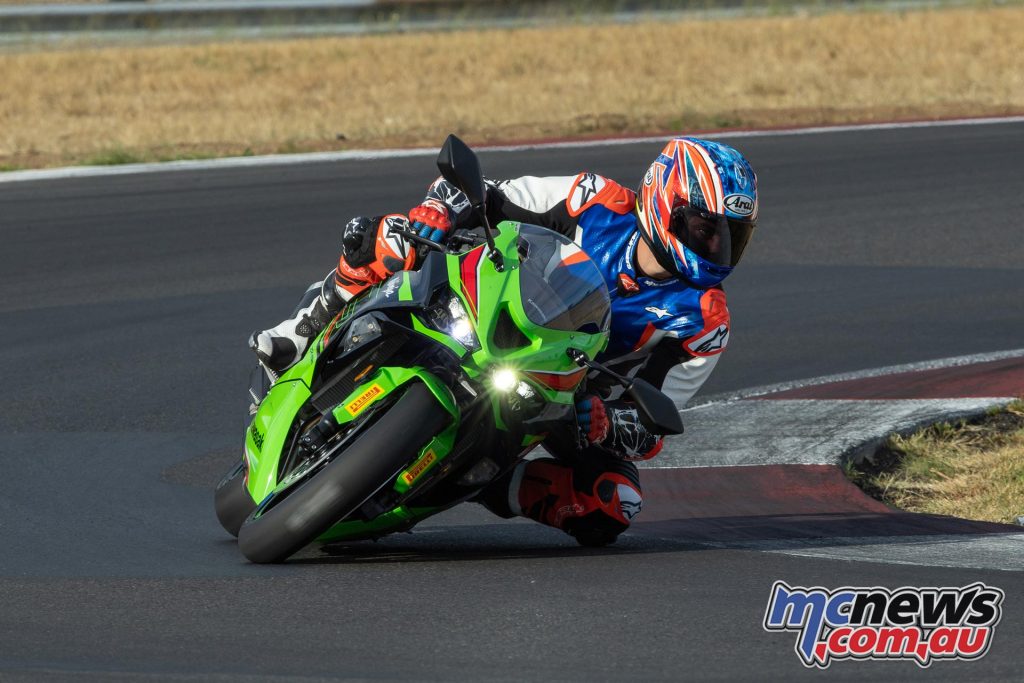
Notice how I said high-lift, and not higher-lift? The 2024 cams have less lift and a shorter duration than last year, and it doesn’t take a doctorate in mechanical engineering to tell you less air and fuel going into the combustion chamber over a shorter time means less bang and less go.
I didn’t ride the ’24 6R on the street so I can’t comment on this enhanced low rpm performance, but on the track it’s almost negligible. That’s because you’re very rarely riding at an engine speed, even in slow corners like hairpins, where you’re concerned about sub-4000 rpm drive on a supersport bike.
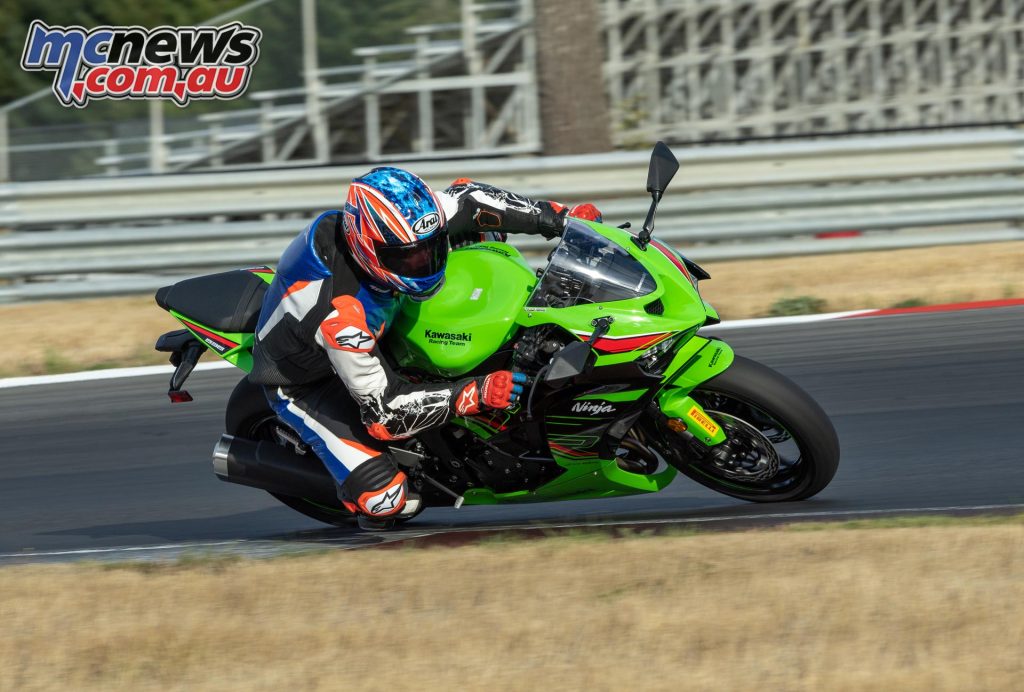
The mid-range performance that has made the 636 such a winner over the years is still thankfully there. The benefit of the extra 36 cc over a regular supersport 600 is clear to see and feel, but when you get into the top-end, the motor goes to snooze mode from about 13,000 rpm onwards.
No longer are you met with the top-end rush we associate with supersport machines. Instead, the ZX-6R tops out at 12,500 rpm with another 2000 rpm on the rev clock to go, and while it’s making all the right noises, you’re not actually getting much acceleration.
This is a direct result of the emissions police strangling the little 636 more and more in that the intake and exhaust cam allows less air and fuel to come in and be burnt at higher rpm, less emissions getting into the atmosphere, less global warming, and more habitat for polar bears. Stupid polar bears.
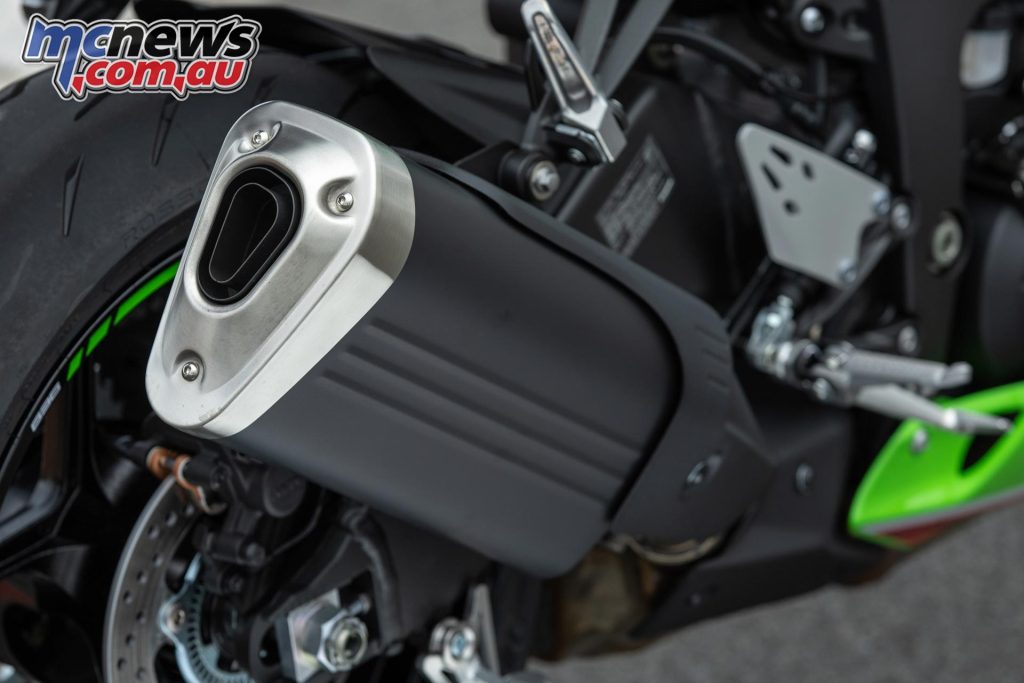
The good news is if you’re taking your 636 to the track on a semi-or permanent basis, just throw a set of race-spec camshafts in there, put a racing exhaust on, remap it and you’ll wake this puppy right up. Not only will you get more overall power and torque, but you’ll be able to smooth out the dips in the torque curve as the motor climbs through the rev range.
The 2024 ECU gains an extra feature in the new integrated riding modes, but when you look closer, they are actually just what was on offer last year rolled into a different package. The ’24 Kawasaki gets Sport, Road and Rain modes, and the already-there Rider mode.
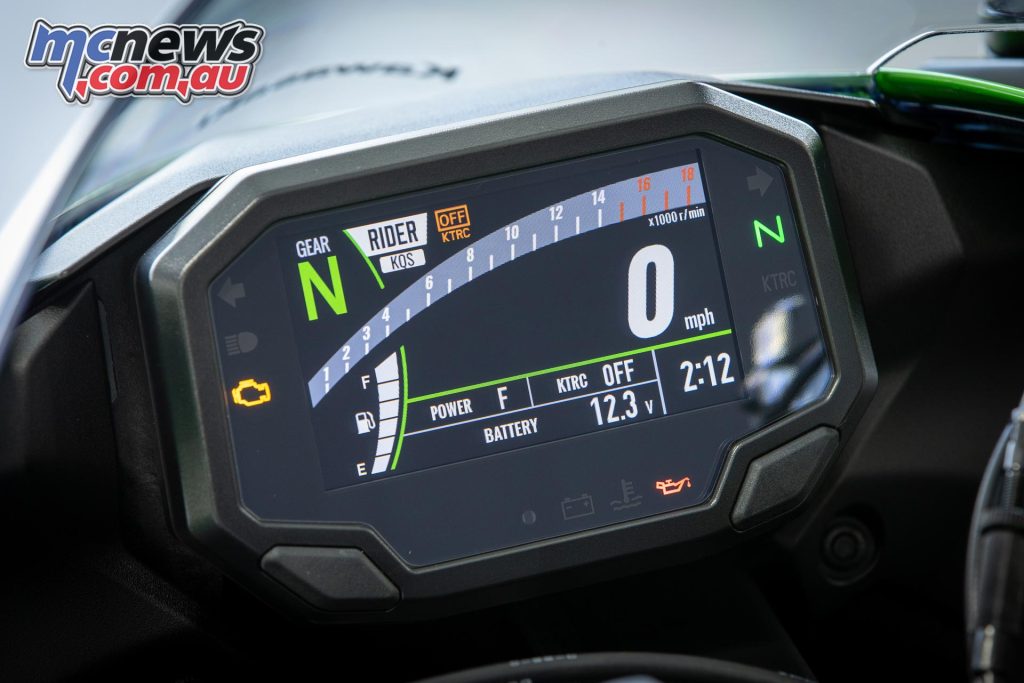
What are those previous three modes? They are just preset throttle and traction control maps — Sport gives you full power and the least TC; Road full power and middle ground TC; and Rain gives you low power and full TC.
Rider mode allows you to have a combination of all three — if you wanted you could have full power and full TC, for example — but it’s nothing you couldn’t do last year.
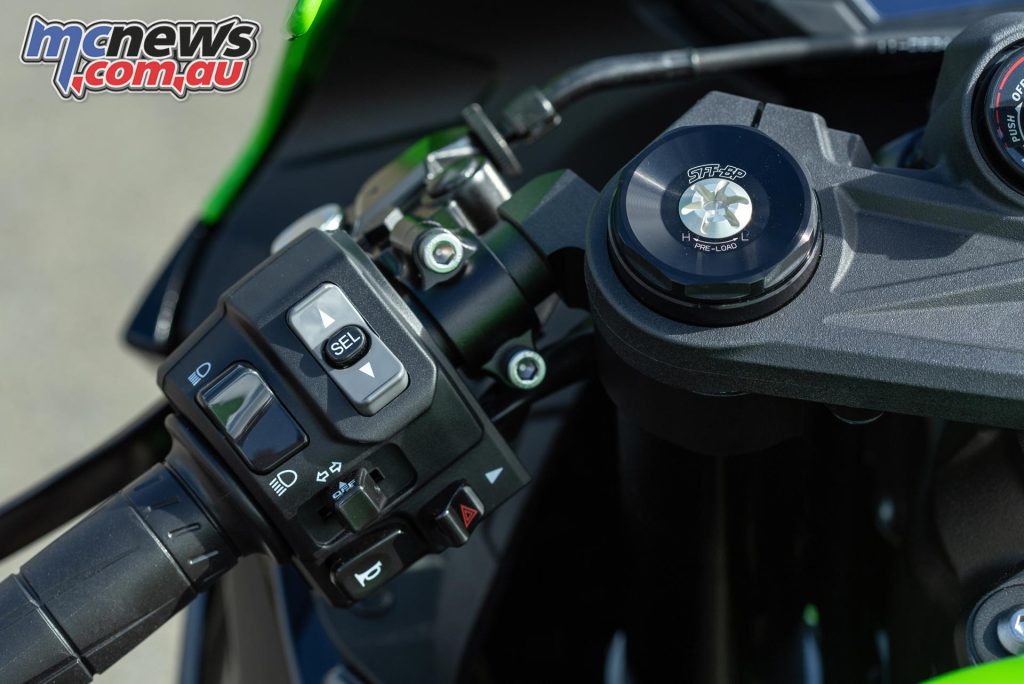
The TC is basic in there’s no Inertial Measurement Unit so all you’ve got is wheel speed sensors and throttle position to give the system an idea of when to cut the power. That being said, the system is good enough for the task. I suspect most will just go to level one of three and leave it there as it gives you a little bit of slip without holding you back too much. Or you could just turn it off.
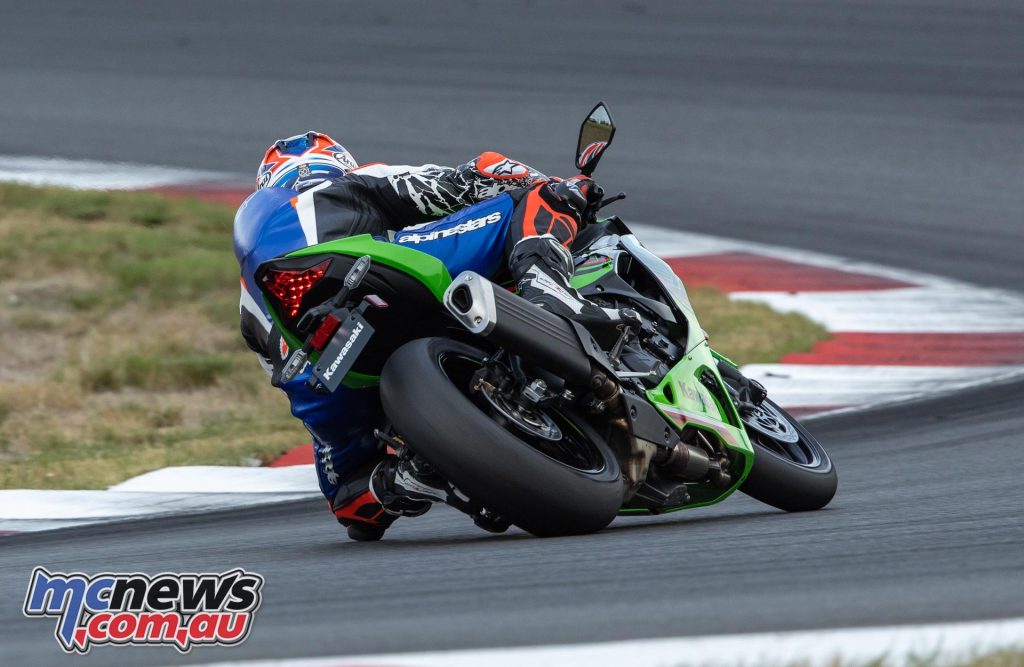
It’s a cable throttle on the 6R and it’s not as smooth as I’d have liked. Even when tightened up there’s a decent amount of free play at the twist grip and this translates to a slightly abrupt torque delivery at low rpm. Get the motor spinning up into the higher rpm ranges and this isn’t so much of an issue, but it’s a by-product of a relatively aged system that has to contend with modern emissions rules.
The cable throttle also means the quick-shifter remains unchanged in that it’s only on up-shift. There’s no auto-blipper for downshifts, so you’re back to using the clutch for those duties. I personally prefer this as most (not all) of the auto-blippers on the market don’t give me the same deft feel as using the clutch to control the slipper function for corner entry.
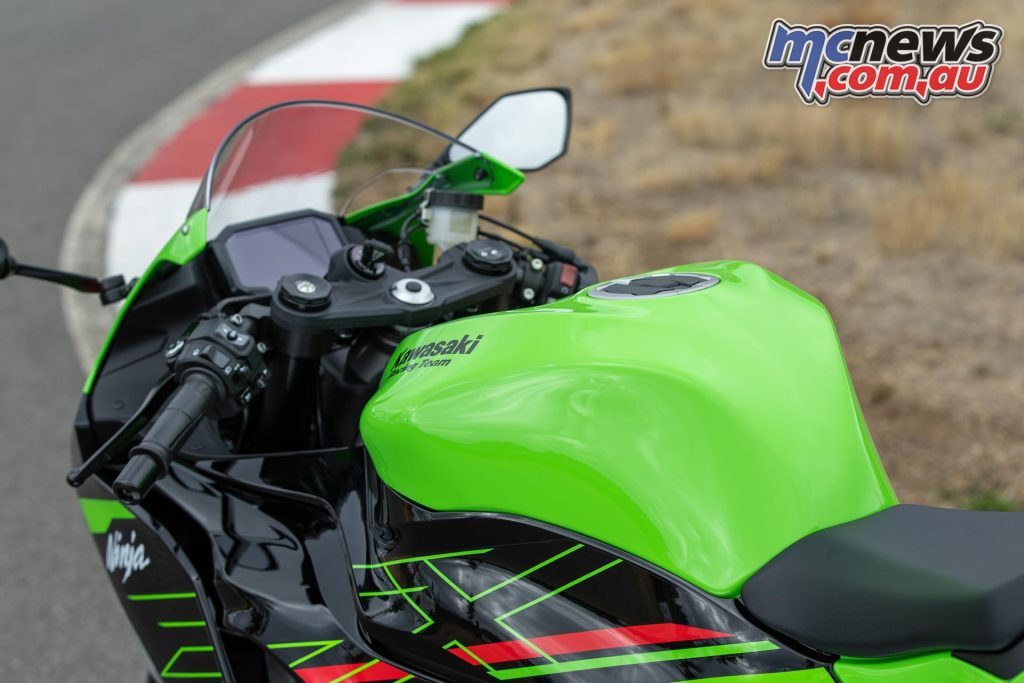
As for the chassis, it’s the same top to bottom, front to back as in 2023, the only difference being old-school circular front brake rotors versus the petal rotors of last year.
You’ve got the same 41 mm Showa SFF-BP (Separate Function Fork – Big Piston) front fork with pre-load adjustment on the left fork, compression and rebound on the right, and a fully-adjustable Showa shock out the back. The chassis is one of the strong points of the Kawasaki. Infinitely nimble — although not quite as much as a Yamaha YZF-R6 — the 6R’s chassis loves going apex hunting.
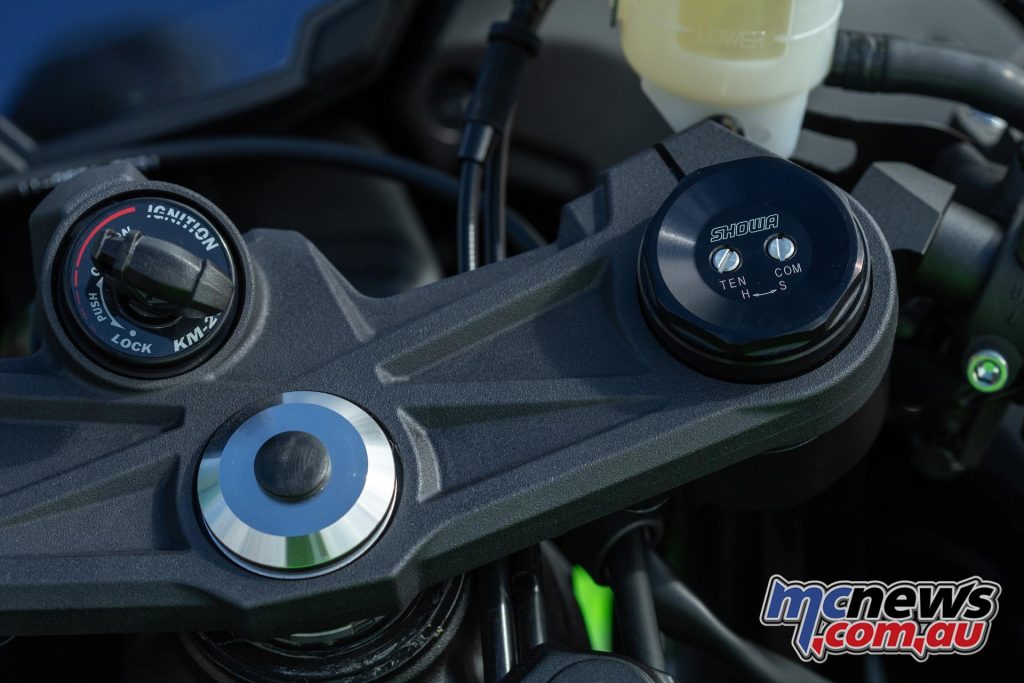
You can change your line easily with the 6R, pulling it tight to the apex with a simple tug on the bars and stretch of the neck. Overall, the ride position is a little cramped for my 183 cm — I’d go for a set of aftermarket rear-sets that can be mounted lower and further back to get a bit of blood flow to my knees, as I would also get some cams and an exhaust for the motor.
The brakes feel, well, fine. I can’t tell if they’re any better or not. Kawasaki says they are and although the feeling at the master-cylinder is a little wooden, I’ll have to take their word for it. There’s plenty of stopping power at the lever but even on its softest setting you don’t get a lot of play which will suit some riders, others, not so much.
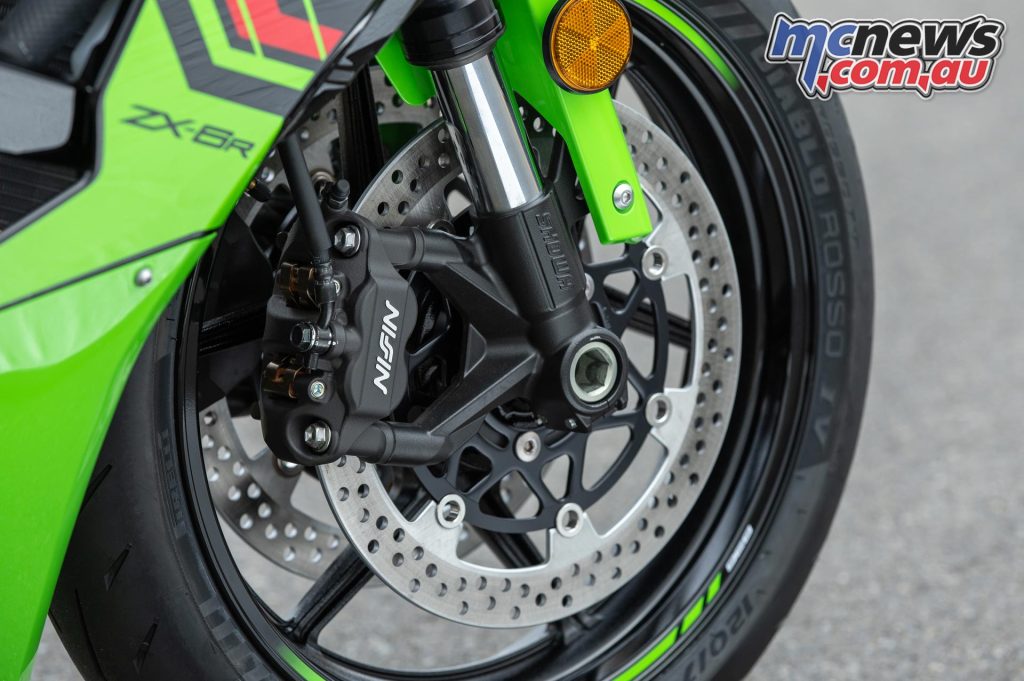
In the end, I’m a little perplexed about the new 6R. It’s a good bike, no doubt, but it’s only reason for being renewed is to keep it under the emissions level set by the European Union. It’s not as fast outright as I’d have hoped for a pure performance bike, but the bones are good and a few tweaks by a skilled tuner will give you a real supersport weapon.
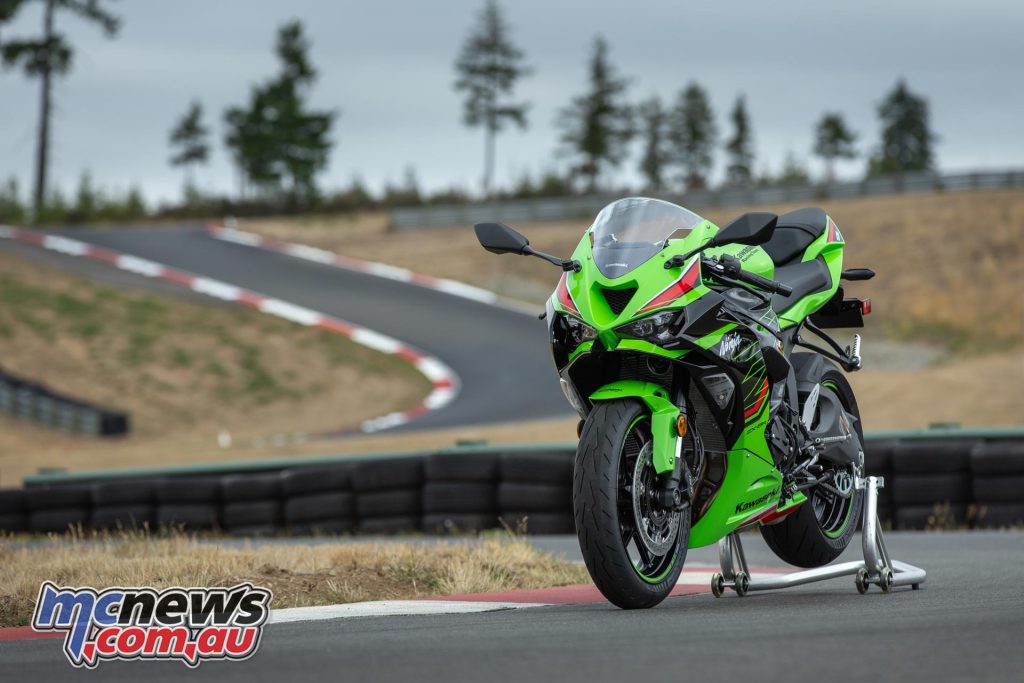
Considering it’s not got quite the level of performance it did last year, plus the fact it costs a bit more — regardless of the fancy dash and new face — it’s hard to see this as a step forward. But it’s still a great bike, and although there won’t be the fancied 750 cc version anytime soon, it still represents decent value in this ever-competitive space.
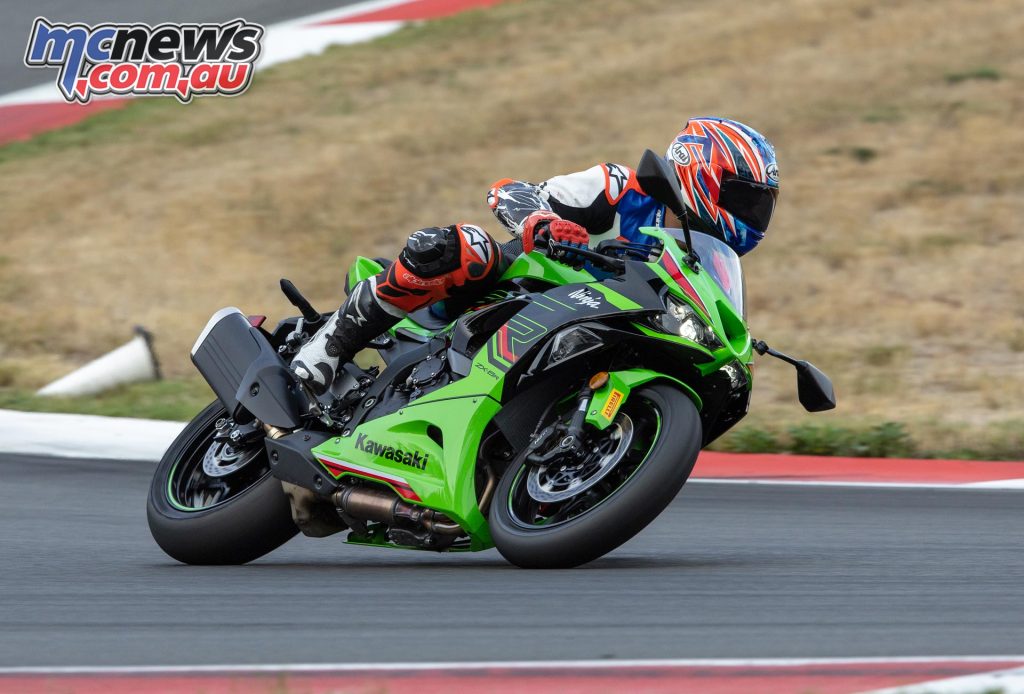
For more information head to the Kawasaki Australia website, where you can check the ride-away pricing according to your location.
2024 Kawasaki Ninja ZX-6R Specifications
| 2024 Kawasaki Ninja ZX-6R Specifications | |
| Engine | Liquid-cooled, four-stroke In-Line Four, DOHC, 16 valves |
| Displacement | 636 cc |
| Bore x Stroke | 67.0 x 45.1 mm |
| Compression Ratio | 12.9:1 |
| Maximum Power | 91.0 kW {124 PS} / 13,000 rpm |
| Maximum Power with Ram Air | 95.2 kW {129 PS} / 13,000 rpm |
| Maximum Torque | 69.0 Nm {7.0 kgfm} / 11,000 rpm Torque |
| Fuel System | Fuel injection: ø38 mm x 4 with oval sub-throttles |
| Lubrication | Forced lubrication, wet sump |
| Transmission | 6-speed, return |
| Primary Reduction Ratio | 1.900 (76/40) |
| Final Reduction Ratio | 2.867 (43/15) |
| Clutch | Wet multi-disc, manual, slip & assist |
| Final Drive | Chain |
| Frame | Perimeter, pressed-aluminium |
| Front Suspension | ø41 mm inverted fork (SFF-BP) with rebound and compression damping and spring preload adjustability |
| Rear Suspension | Bottom-Link Uni Trak, gas-charged shock with piggyback reservoir, compression and rebound damping and spring preload adjustability |
| Front Wheel Travel | 120 mm |
| Rear Wheel Travel | 151 mm |
| Rake | 23.5° |
| Trail | 101 mm |
| Steering Angle (L/R) | 27° / 27° |
| Front Tyre | 120/70ZR17M/C (58W) |
| Rear Tyre | 180/55ZR17M/C (73W) |
| Front Brake/s | Dual semi-floating ø310 mm discs |
| Front Caliper/s | Radial-mount, monobloc, opposed 4-piston |
| Rear Brake | ø220 mm disc |
| Rear Caliper | Single-bore pin-slide aluminium-piston |
| Dimensions (LxWxH) | 2025 x 710 x 1105 mm |
| Wheelbase | 1400 mm |
| Road Clearance | 130 mm |
| Seat Height | 830 mm |
| Curb Mass | 198 kg |
| Fuel Capacity | 17 litres |
| Electronics | KQS, KTRC, Power Modes, Smartphone connectivety, KIBS, ABS |
2024 Kawasaki Ninja ZX-6R Gallery
Images by Kevin Wing




























































